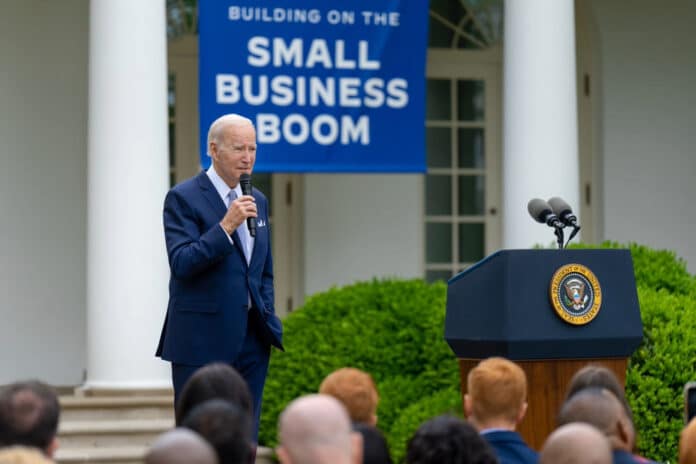
(Daily Caller News Foundation) — Average Americans are finding homes and cars increasingly unaffordable as inflation from high government spending raises prices and degrades purchasing power.
Half of consumers are being priced out of the car market as the cost of a monthly car loan payment is far exceeding what an average American can afford, while the home affordability index has fallen from a 169.9 point average in 2020 to 87.8 points as of July, according to the National Association of Realtors. One key driver of the rising expenses is inflation, which peaked at 9.1% in June 2022 and is linked to high government spending under the Biden administration, according to experts who spoke to the Daily Caller News Foundation.
“Both housing and automobiles have become increasingly less affordable to American households as a direct result of the Fed having to raise interest rates to curb inflation,” Desmond Lachman, a senior fellow at the American Enterprise Institute, told the DCNF. “Most people finance their home and auto purchases by taking out loans and those loans have become much more expensive.”
The Biden administration has introduced a number of high-spending bills that have contributed to the national debt, including the $1.9 trillion American Rescue Plan signed in March 2021 that aimed to relieve the economic effects of the COVID-19 pandemic. The president also signed the Inflation Reduction Act in August 2022, which equates to around $750 billion in new spending, with nearly $370 billion of that going towards green initiatives.
The Federal Reserve, in an attempt to slow inflation, has raised the federal funds rate 11 times since 2022, bringing the current rate to a range of 5.25% and 5.50%. Inflation has continued to remain elevated, rising to 3.7% in August from 3.2% in July, far above the 2% target of the Fed.
“Housing is rapidly becoming unaffordable for average Americans owing to what are really two sides of the same coin,” Peter Earle, an economist at the American Institute for Economic Research, told the DCNF. “First, the last few years of inflation have reduced the borrowing power of the dollar. The other side of that, and really the consequent effect, is the rise in asset prices. In most markets home prices have risen between 10 and 15 percent since 2021; more, in some places.”

The median home price in July was $412,300, and the average mortgage rate was 6.92% compared to 2020, when the median home price was $300,200 with a 3.17% mortgage rate, according to the National Association of Realtors.
Real wages have been significantly degraded by inflation, with the median weekly real earnings for both wage and salary workers declining 7.1% in the second quarter of 2023 from their all-time peak in the second quarter of 2020, according to the Federal Reserve Bank of St. Louis.
The price of auto insurance has risen 19.1% year-over-year as of August due to the increasing number of claims, while the price of repairs and auto crime has also risen. The loss ratio for insurance companies, the amount that insurance companies receive in premiums compared to how much they deal out in claims, rose to 78.2% in the second quarter of 2023, as opposed to the 64.7% average before the COVID-19 pandemic.
New home construction is crashing. Now down a third in the last year.
Meaning no relief in sight for young families: It now takes $104,000 to qualify for a mortgage.
Meanwhile, there’s about to be a lot of jobless construction workers even as we're importing millions.
Starts… pic.twitter.com/bv3MRis8vw
— Peter St Onge, Ph.D. (@profstonge) September 21, 2023
“The Biden Administration has contributed to this situation by pursuing a highly expansive budget policy that together with very low Fed interest rates caused inflation to surge,” Lachman told the DCNF. “That higher inflation in turn forced the Fed to slam on the monetary policy brakes and raise interest rates at the fastest pace in over forty years.”
The U.S. national debt reached $33 trillion on Tuesday, having already increased by more than $5 trillion over Biden’s term, far greater than the $2.48 trillion increase seen under President Donald Trump and the $4.03 trillion gain under the Obama administration.
“Monetary policy is the domain of the Federal Reserve, and they are at least nominally independent,” Earle told the DCNF. “But by lying about the sources of inflation, mischaracterizing the nature of the inflation, and by passing massive spending bills that are more likely to increase inflation than aid in its suppression — ridiculous names like ‘Inflation Reduction Act’ notwithstanding — the current administration has contributed greatly to economic uncertainty among American consumers. Uncertainty is lethal for economic growth and prosperity.”
“President Biden is investing in affordable housing after decades of inaction,” Michael Kikukawa, assistant press secretary for the White House, told the DCNF. “He believes young people deserve to live in a quality home that they can afford to rent or own — that they deserve a fair shot at the American dream. President Biden is ready to make the significant investments that would make that dream a reality, but Congressional Republicans have blocked every effort to do so.”
“It’s not easy to say what the ‘American Dream’ is at any given moment — we are a nation of hundreds of millions of individuals chasing unique goals,” Earle told the DCNF. “But mendacious and destructive government policies are a hindrance to just about every American’s dream. Unless they’re a politician.”

















